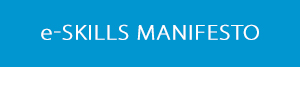ΝΕΑ

04/05/2016
More women in tech? Girls explain how companies can relate to them better
New research shows that technology companies must relate to girls better if they want to increase the number of women choosing a career in the sector. The girls who took part in the survey offered five ways companies can do that.
Girlguiding, which boasts 554,053 members, spoke to 43 of its young members and found that more needed to be done to encourage young women into the sector.
Data showed that seven to 14-year-old girls are very comfortable using technology such as mobile phones and tablets, but are put off when considering future employment in the field. Why? Because of how the industry communicates with them.
The girls, who called technology “fun”, “cool” and “creative” in the survey – which was funded by Microsoft – offered five ways that companies could connect with them better:
- Start young: As girls get older, the more they reject the idea of pursuing a future in technology especially when making subject choices and decisions at school.
- Unleash creativity with purpose: Computing sessions should be fun, interactive and hands-on, with opportunities to explore how technology can solve problems in the world.
- Be relevant: When talking about technology and related careers, use familiar examples that girls can relate to from their everyday lives.
- Words matter: The creative, people-centric and design aspects of digital careers appeal more than technical descriptions of specific technologies.
- Meet us: Tackle perceptions, encourage girls and build their confidence by providing opportunities for girls to meet women already in tech roles.










